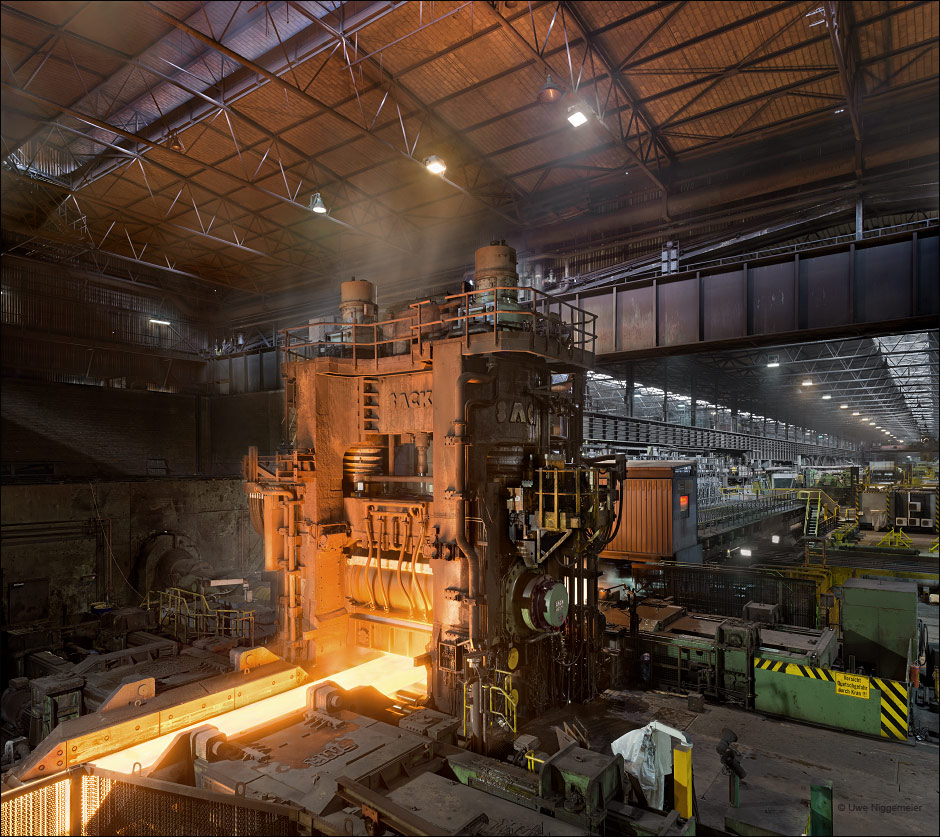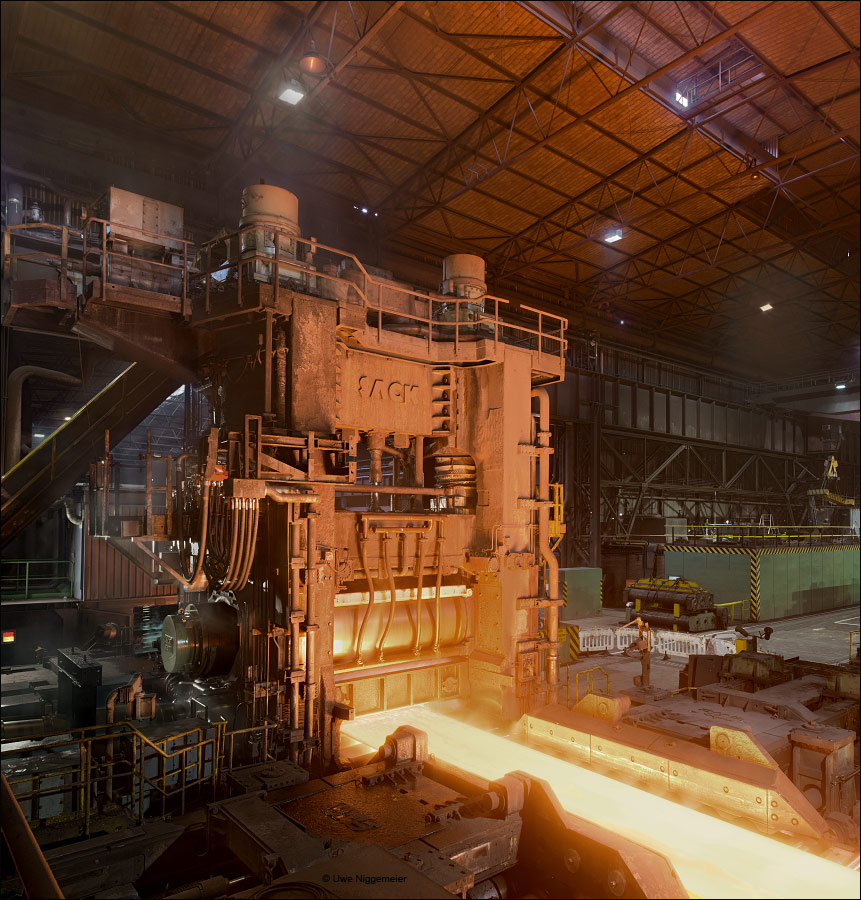
Mit der gestrigen Mittagsschicht hat thyssenkrupp Steel die Produktion von Grobblechen eingestellt.
Das Grobblechwalzwerk in Duisburg-Hüttenheim wurde 1963 durch die Mannesmann AG zur Versorgung des benachbarten Großrohrwerks (Stilllegung 1978) mit Blechen erbaut.
1970 übernahm die August Thyssen Hütte im Tausch mit ihren Rohrwerken die Flachstahlsparte von Mannesmann. 1978 wurde das neue 3,9 Meter Quartogerüst durch die Sack Maschinenbau GmbH installiert.
Tag Archives: Heavy Plate
The 5,1 Meter Heavy Plate Mill
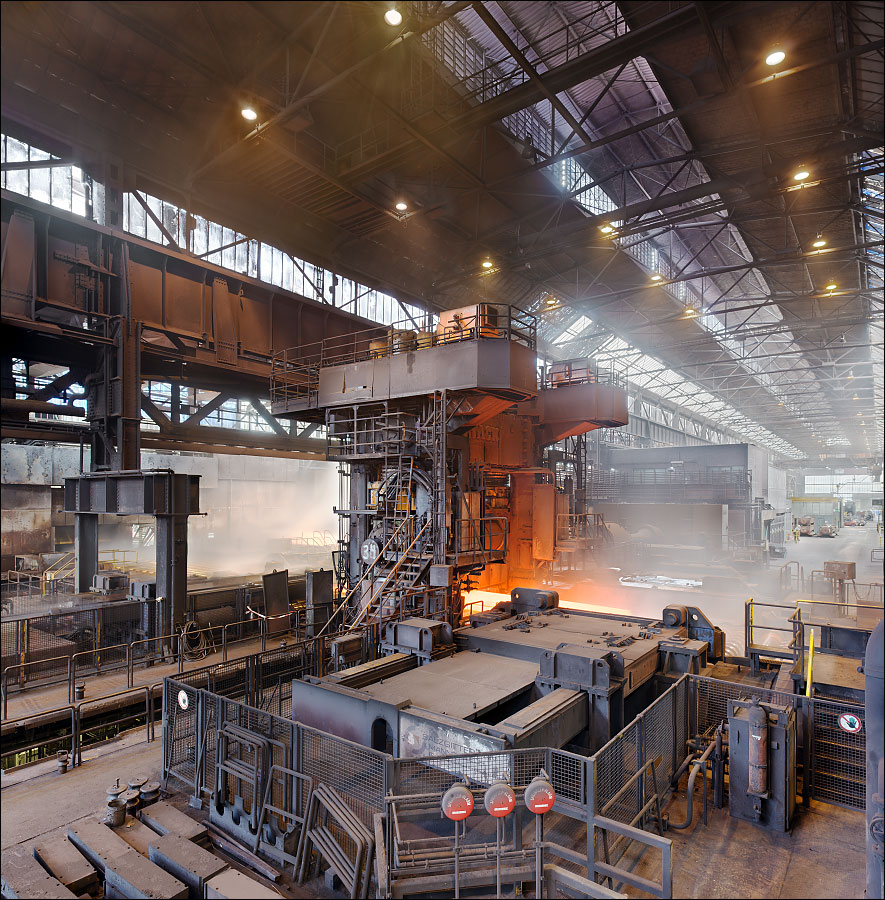
in Mülheim was installed nearly 50 years ago in 1969. The 270 t rolling stand was manufactured by the Sack Maschinenfabrik in Düsseldorf, it was the largest of it’s kind in Germany. Today it is owned by Salzgitter Mannesmann Grobblech and mostly delivers heavy plates to the Europipe tube welding facilities in Mülheim.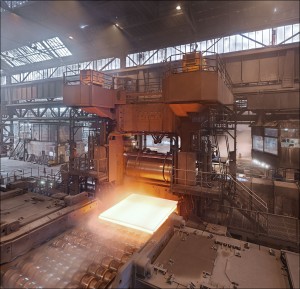
Real Heavy Plate
up to 900mm thick and 80 tons heavy is still produced at the old Marrel Frères site in Chateauneuf, France.
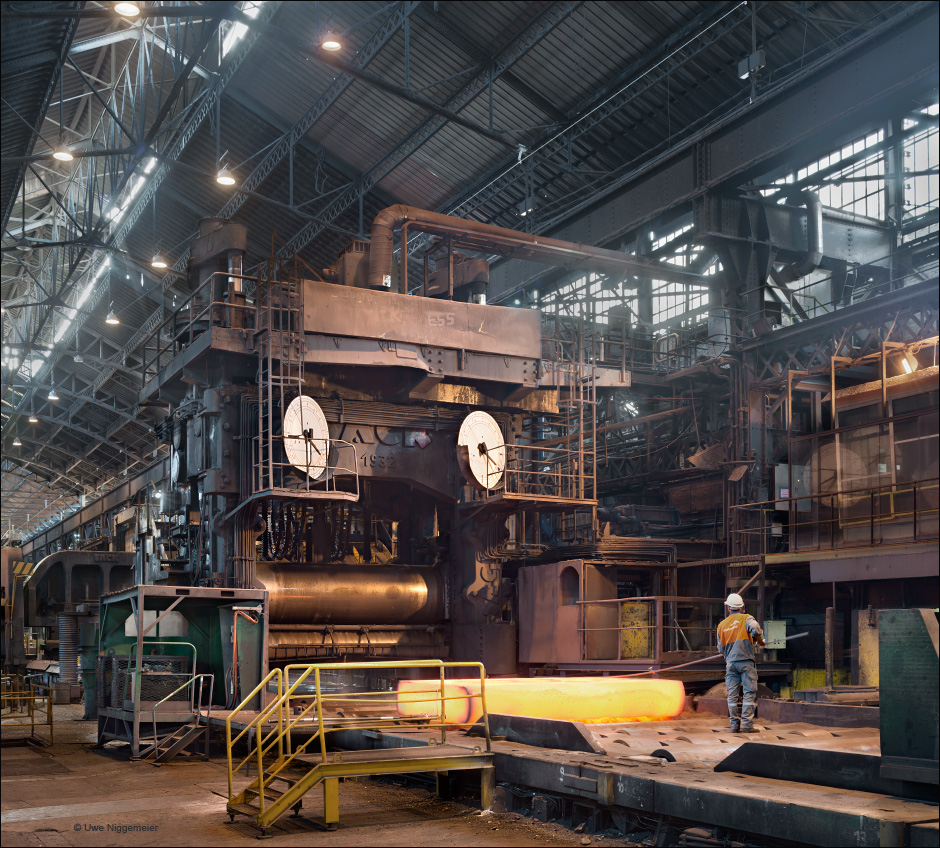
The steel mill was founded in 1867 by the Marrel brothers.
Main product were flat irons and armoured plates.
In 1932 a unique combined heavy plate rolling and forging mill was installed that is still in use today.
In 1974 Marrel Frères became part of the Creusot Loire group and eight years later the production of long rolled products was transfered to St. Etienne and after the bancruptcy of Creusot Loire the mill became part of USINOR.
In the following years the company changed it’s name frequently (Creusot Loire Industrie, CLI Fafer, Usinor Industeel). Today the site is part of Industeel producing the largest heavy plate in Europe.
TKS Heavy Plate Mill, Duisburg
The heavy plate mill in Duisburg-Hüttenheim, Germany was built by the Mannesmann company in 1963 to supply plates to their adjecent large diameter pipe welding mill (closed in 1978).
In 1970 the August Thyssen Hütte AG took over the flat rolling business from Mannesmann.
In 1978 the Sack company installed the 3,9 meter four-high rolling stand still in use today.
Images now at Stahlseite.

